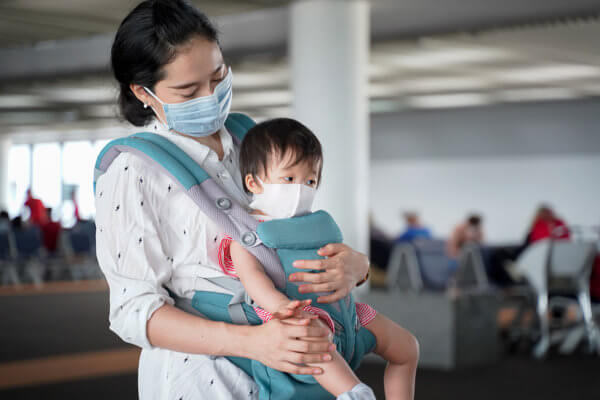As a kid, my main car safety device came in the form of my mom. When she hit the brakes, she’d brace her right arm across my sister and me (who rode together in the front seat) to prevent us from sliding into the dashboard. Not to date myself, but this was before seat belt laws—and before most parents even knew about car seats.
Today, it’s a much different—and much less dangerous—story. Since the mid-1980s, all 50 states have passed laws requiring use of child safety seats, making car travel much safer for kids. In passenger cars, child restraints are 71 percent effective in reducing deaths among infants, the National Highway Traffic Safety Administration (NHTSA) says.
Those numbers would be higher if more parents used their car seats properly. Sadly, most don’t. In a recent NHTSA study, 73 percent of child restraint systems showed one or more “critical misuses.” The most common: loose harnesses, and seats not well secured to the car.
With so many choices, how do you decide? Read these expert tips and recommendations.
Recent Advances
Car seat makers and legislators have been working to make improvements. One of the biggest in recent years: Almost all cars and safety seats made since September 2002 must have the LATCH (Lower Anchors and Tethers for Children) system. Built-in anchors on the backseat make installation easier by eliminating use of seat belts, and upper tethers help secure the seat to the car.
More recently, the federal government set new standards requiring infant seats to protect babies up to 22 pounds. The goal: to keep little ones rear-facing—the safest way for them to ride—longer. With a similar objective, Graco introduced its Infant SafeSeat™, for babies up to 30 pounds, in early 2006. The weight limit for rear-facing use of many convertible seats also has been increased to 30 or 35 pounds.
Also new on select car seats are layers of energy-absorbing EPS foam for added protection, especially in side- impact crashes. “Britax has been an innovator on that front, and other manufacturers are jumping on board,” says Denise Fields, co-author of Baby Bargains: Secrets to Saving 20% to 50% on Baby Furniture, Equipment, Clothes, Toys, Maternity Wear and Much, Much More! (Windsor Peak Press, 2005). Late last year, Britax released an energy- absorbing Rip-Stitch tether to minimize G-force effects on a child in an accident.
The Best Seat for You
Even with these innovations, the most important rules in choosing a car seat remain the same: Look for one that’s easy to use and is compatible with your car. Regardless of its safety features, a car seat won’t protect your baby if you don’t install and use it correctly every time, says Marilyn Bull, M.D., medical director of the Automotive Safety for Children Program at the Indiana University School of Medicine in Indianapolis.
Do research and shop around, Fields says. Ask a mom friend with a similar car for a recommendation. Before buying, hit the stores to check out some seats in person. If possible, take samples to your car to see if they fit, and fiddle with the harness to make sure it adjusts easily.
Installation Tips
When installing your car seat, follow the instructions that come with it, and your car owner’s manual, Bull advises. The seat should rest at a 45-degree angle so your baby’s head doesn’t flop forward, which could compromise her airway. The base mustn’t budge more than an inch in any direction. If you’re in doubt, get free assistance from a certified Child Passenger Safety (CPS) technician. CPS techs are trained to work with a variety of cars and car seats. To find one, visit the US Department of Transportation. Police and fire departments or hospitals may provide a similar service.
It’s crucial to secure your baby tightly for every car ride. After buckling her in, pull up on the chest straps to remove slack before tugging on the tail to tighten the harness, suggests pediatrician Alisa Baer, M.D., aka “The Car Seat Lady,” an expert on car seat safety for 10 years. Just one finger should fit between the straps and baby’s collarbone.
Also remember: Even in sub-zero temperatures, don’t bundle your baby in bulky clothes in her car seat. Bulk could make the harness too loose in a crash, Baer cautions. Similarly, beware of products such as fleece liners. To keep baby warm, lay blankets over the buckled harness.




